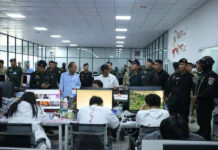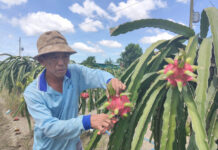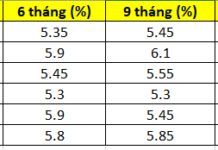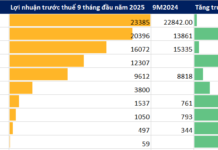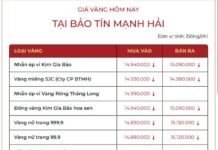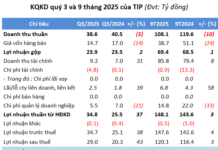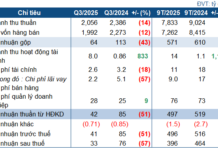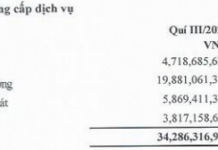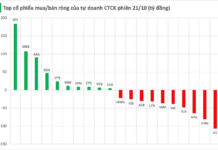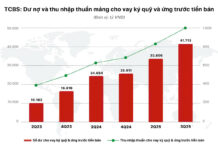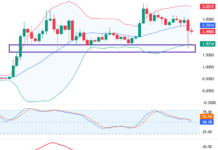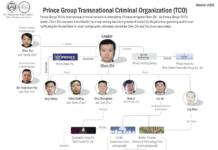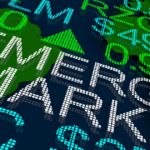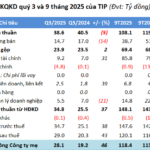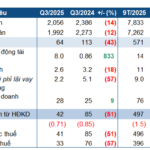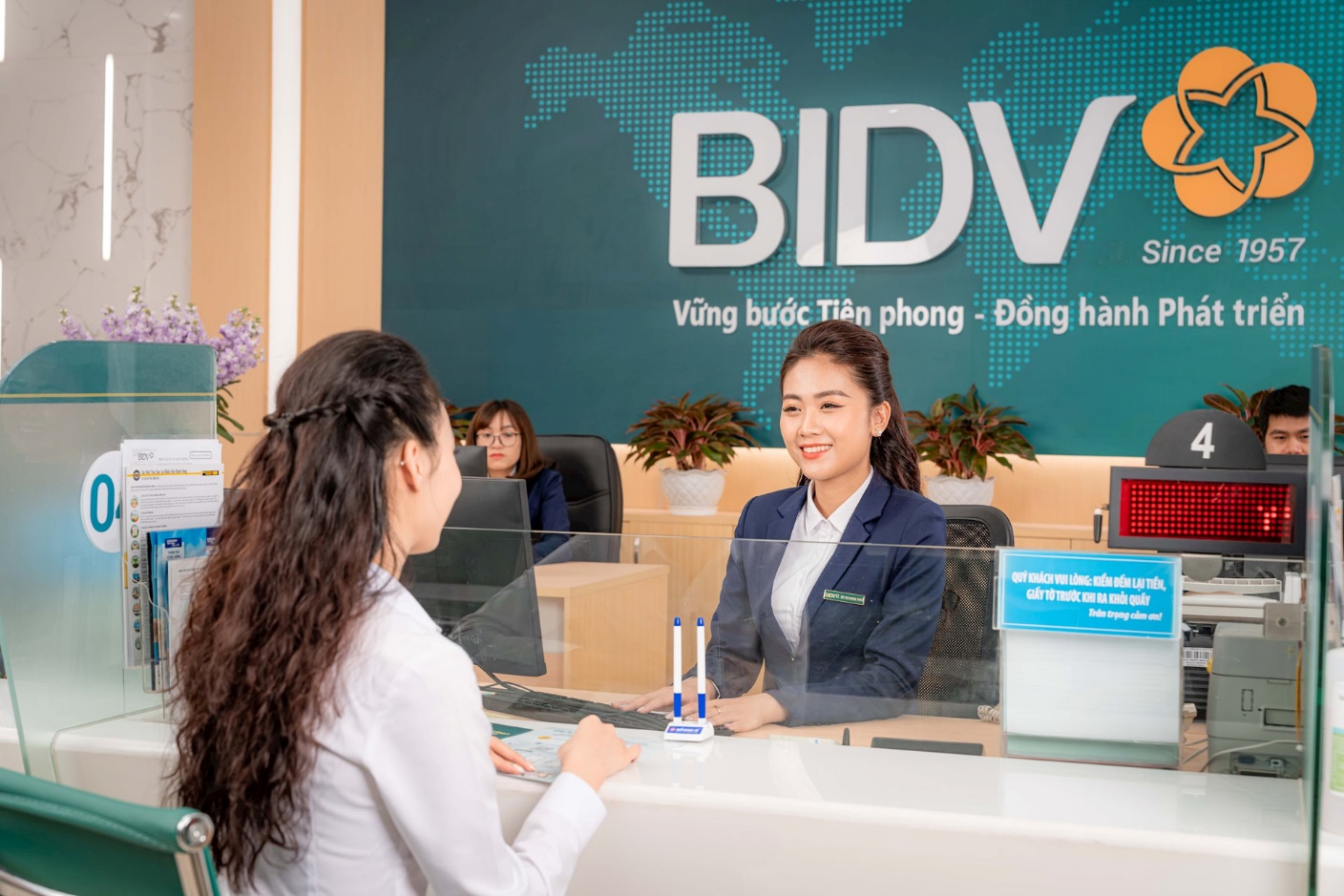On September 5, 2025, at the International Conference on “Unlocking the International Green Financial Market – Promoting Sustainable Development and Financial Inclusion in Vietnam,” experts analyzed the landscape of the country’s green finance market.
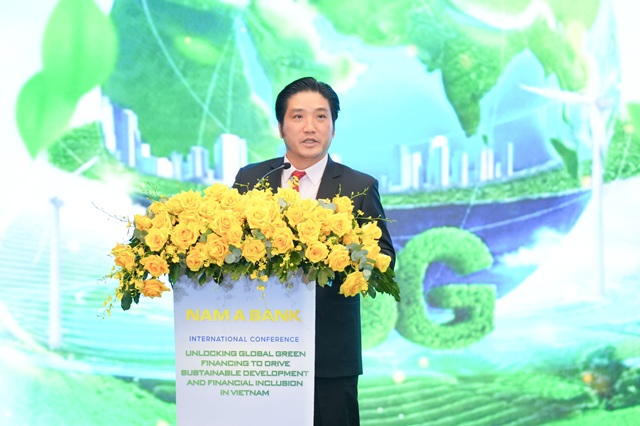
Mr. Tran Khai Hoan – Member of the Board of Directors and Acting CEO of Nam A Bank
|
Kicking off the conference, Mr. Tran Khai Hoan, Member of the Board of Directors and Acting CEO of Nam A Bank, emphasized that climate change, energy crises, and social inequalities pose unprecedented challenges, requiring the catalytic role of green and inclusive finance.
On a global scale, green and inclusive finance have proven to be catalytic in sustainable development, backed by strong support from governments and international institutions. This is evident through the Paris Agreement and the Sustainable Development Goals. In tandem, inclusive finance is opening up opportunities for all economic sectors, especially the private sector, to easily access capital and enhance their competitiveness.
In line with this global trend, Nam A Bank recognizes its role in pioneering the promotion of green finance solutions. With a foundation of transparent governance adhering to international standards such as IFRS, Basel III, and ESMS, Nam A Bank is committed to becoming a model for sustainable development in the Vietnamese private sector, accompanying the government and the international community in the journey towards sustainable development and financial inclusion in Vietnam.
Green capital is growing rapidly but remains modest in scale
Speaking at the conference, Mr. Nguyen Quoc Hung, Secretary-General of the Vietnam Banks Association, shared that the government’s commitment to achieving the Net Zero target by 2050 presents both a challenge and an opportunity for Vietnam to become an attractive destination for global green capital.
However, the most significant challenge is the enormous capital requirement. According to the World Bank, Vietnam needs approximately $368 billion by 2040 to meet this goal. Meanwhile, the domestic green finance market, despite impressive growth, remains minuscule compared to the demand.
Specifically, the green credit and bond market has grown at a rate of over 20% annually since 2017. As of June 30, 2025, 63 credit institutions have generated green credit outstanding balances of over 736 trillion VND, accounting for 4.3% of the total outstanding balance of the economy. This capital is primarily directed towards renewable energy (39%) and green agriculture (26%).
In the green bond market, there has been increased activity. In 2024 alone, there were 6 issuances totaling more than 10,000 billion VND, nearly four times the amount in 2023. However, the total outstanding balance of this market stands at just over 30 trillion VND, accounting for about 2% of the total corporate bond market.
These figures indicate that the proportion of green capital is still modest compared to the annual requirement of about $20 billion to achieve the transition goals.
From policy to practical insights from various industries
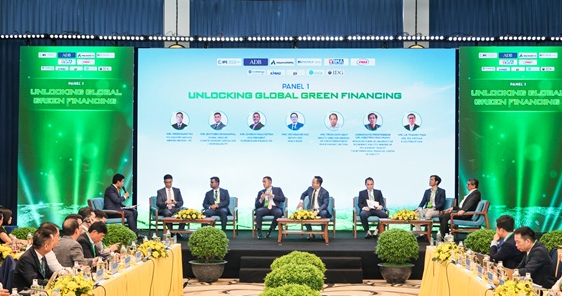
Experts discussing at the workshop
|
To address this challenge, a solid foundation is being built from multiple fronts. In terms of policy, Mr. Tran Anh Quy, Deputy Director of the Credit Department, affirmed that the banking industry has been a pioneer in green transformation. As early as 2015, the State Bank of Vietnam issued Directive 03, setting the direction for channeling credit capital into green sectors. This was followed by strategies and projects for the development of green banking by 2030, with a vision towards 2045. Legally, the Law on Environmental Protection of 2020 laid the groundwork for the issuance of Circular 17 on environmental risk management in credit activities.
“Behind these documents is the decade-long accompaniment of organizations such as the IFC, which has supported us in developing guidelines, raising awareness, and enhancing the capacity of the entire industry. As a result, by the end of 2024, many banks had published sustainability reports and successfully issued green bonds. We affirm the role of the central bank in ensuring macro stability and creating the most favorable conditions for financial institutions and businesses to operate,” shared Mr. Quy.
From the perspective of the capital market, Mr. Do Ngoc Quynh, Secretary-General of the Vietnam Bond Market Association (VBMA), pointed out that green finance is merely a tool to implement the sustainable transition strategy. However, green finance needs to be substantive. All business models must first be financially viable and profitable. Investors, even those pursuing green objectives, require projects to be effective.
Mr. Quy highlighted that the most significant barrier in the domestic green finance market has been the lack of a “common language,” namely a national green taxonomy, to define what constitutes “green.” The government’s issuance of Decision No. 21/2025/QD-TTg on the green classification is the long-awaited “common language” that provides a unified set of standards to identify “green” activities, enabling supportive policies to be implemented in practice and removing obstacles for the domestic capital market.
Furthermore, Prof. Nguyen Huu Huan – University of Economics Ho Chi Minh City, as a member of the advisory group for the International Financial Center in Ho Chi Minh City, shared that the establishment of the center will serve as a capital hub, promoting potential green projects and developing a transparent legal framework in line with international standards. Banks will no longer need to incur high costs to seek capital abroad. This will enhance trust, break down procedural barriers, and attract global green capital.
However, the path from policy to implementation remains arduous. Mr. Nguyen Hoai Nam, Secretary-General of the Vietnam Association of Seafood Exporters and Producers (VASEP), stated that the seafood industry is accustomed to stringent international sustainability standards for exports. But he posed a critical question: “It’s obviously good, so why aren’t more people participating in green finance?”, indicating a gap between financial products and the actual needs of businesses.
Mr. Nguyen Viet Tuong, Vice President of the Vietnam Rubber Association and Chairman of the Board of Directors of Dak Lak Rubber Joint Stock Company, shared that the industry has made significant progress in obtaining FSC forest management certification and recycling. However, small businesses and farmers still face technical and financial challenges.
Mr. Hoang Vinh Long, President of the Vietnam Tea Association, offered a positive perspective by encouraging stakeholders not to view “green barriers” as obstacles but as mandatory standards and a driving force for the industry’s development. Nonetheless, the most significant challenges remain changing the mindset of farmers and addressing the capital constraints for technological innovation.
– 17:52 09/05/2025



